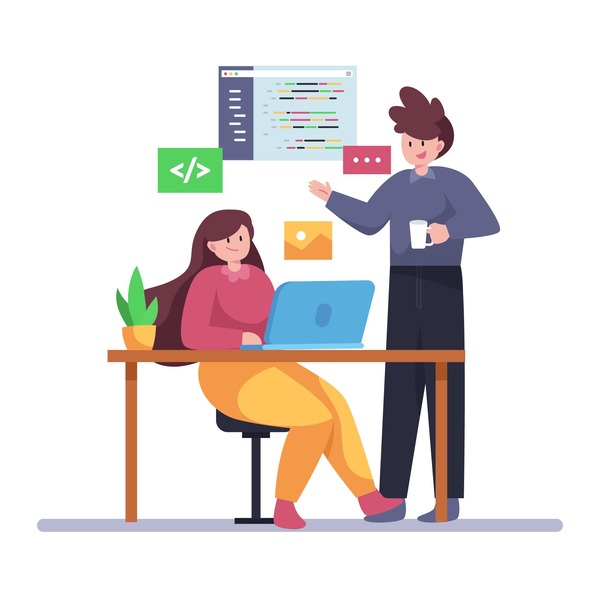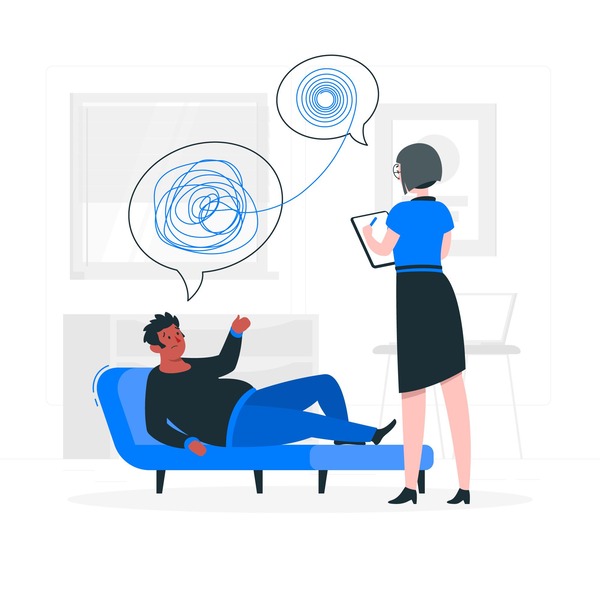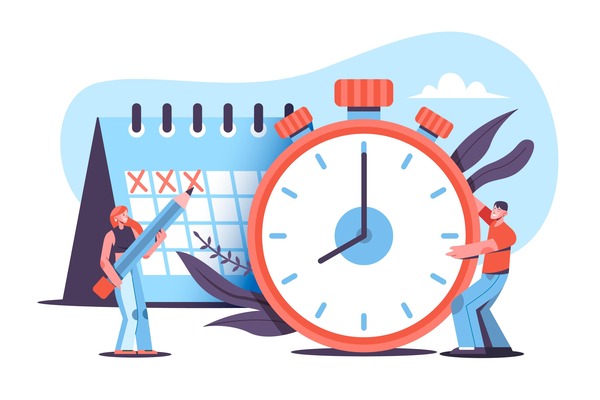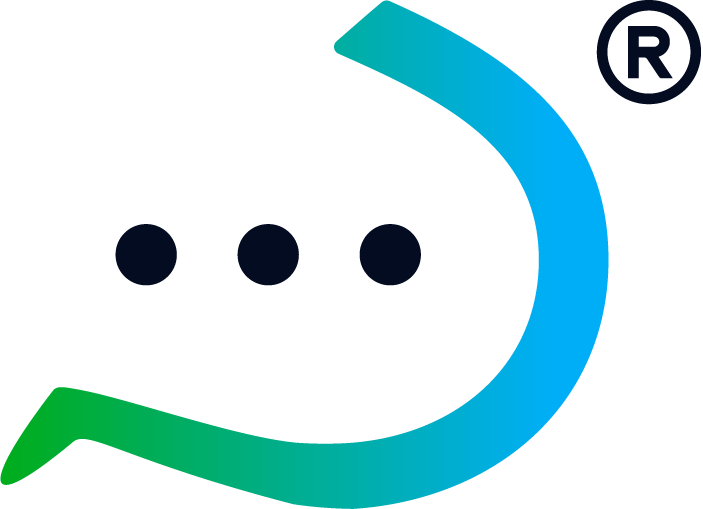You are not alone if you are currently on search engines typing, “UX designer skills for 2024”. With the emergence of AI, there have been fears of AI putting designers out of jobs. There are even talks about the extinction of specialists and the survival of generalist designers in years to come. Unless, you do not have plans to further your career in design, learning what UX designer skills will be required in 2024 and what will not is needed to stay competitive and relevant in the design industry.
In this blog post, we will discuss 9 essential UX designer skills that will help you stand out as a UX designer and product designer and how you can develop them. These skills will keep you relevant and competitive even after AI is trained to be emphatic.
The first 3 points are necessities you already know. There would be no point in knowing the rest if you have no prior knowledge of these. This blog post will only be relevant to you if you are in design and want to stay competitive at your job. Or you are looking to get into design by 2024.

Basic UX Designer Skills
Design thinking skills
Having Design thinking skills as a UX designer equips you to empathize deeply with users, ideate creatively, and prototype effectively, ultimately crafting designs that solve real problems and drive positive impact.
How to develop or improve your Design thinking skills
- Be curious and observant
Being curious and observant are like the fuel and radar for developing design thinking skills in UX designers. When you are curious, you begin to ask how and why about everything related to users and their experiences. This fuels discovery, uncovering hidden needs and challenges that traditional research might miss.
- Practice empathy
Practicing empathy allows you go beyond data to connect with users on an emotional level, understanding their fears, and frustrations.
User Experience Design Skills
User experience design or UXD is the process of designing user experiences that are intuitive, easy to use, and delightful. You need to understand the needs and desires of users to design products that are not only functional but also enjoyable to use.
How to develop or improve your user experience design skills
- Understand the principles of user experience design
Understanding the principles of UXD is essential for developing strong UX design skills. Familiarity with these principles allows you to make informed decisions about how to design a product that is both useful and usable. Consider the principle of usability, for instance—this understanding enables you to craft products that are effortlessly navigable and user-friendly.
- Become familiar with tools and techniques used in UXD
Mastering the tools and techniques of user experience design (UXD) is crucial for crafting and evaluating your products. Proficiency with these tools enhances your efficiency and effectiveness in the design process. Take Figma, for instance—it simplifies the creation and sharing of prototypes among team members. Then you receive feedback and can iterate on your designs as needed. Moreover, Figma facilitates the development of clickable prototypes, which can be used to test the usability of your product.
User interface design
Ever purchased a product, maybe a wristwatch, because the packaging was too pretty to pass? This is the same psychology at play when users look at an aesthetically pleasing UI. As much as the user experience is important, attention should be given to the UI of your website or app as well. Things like the look and feel of your layout, color, font, etc. determine if your product will become a favorite for your users.
How to develop or improve your User Interface Design skills.
- Understand color application
Colors play a significant role visually. Understand what colors evoke certain emotions and meaning in your users. Eg. Colors like blue and orange are usually used for call-to-action buttons. (add an image of a CTA button) because they draw the user’s attention. Overall, it’s best to use contrasting colors for CTA buttons.
- Understand UI design principles
There are certain laws and principles in UI design. It would be helpful to understand them as they serve as a guide to help you design accessible UIs for your product and by extension, improve your UX designer skills. For example, the principle of consistency helps you understand that using familiar elements in your UI helps reduce cognitive load and simplifies user flow.
6 Underrated UX Designer Skills
Ability to collaborate with developers

Collaborating with team members, especially developers is top on the list of UX designer skills. Why? Because without it, even flawlessly executed designs can pose technical challenges during development, thanks to communication gaps and no collaboration between you and the development team.
How to collaborate with developers
- Communicate
It is common practice to bring developers on board after the design is completed. This is what usually leads to friction between designers and developers and differences between your design and the final project. Just like every other team member, bringing your developers on board from the start of the design project (the wireframing stage at least) will save you a lot of headaches and iterations in the long run.
- Your design should be technically feasible
Be realistic, some designs, despite how amazing they are, can be a technical challenge. Always ensure that your designs are technically feasible without compromising the user experience or user interface design.
Behavioral Psychology

Understanding behavioral psychology comes 2nd on the list of UX designer skills because this skill is super useful in helping you know what makes users stick with your product and lets you use that knowledge in your design. Just remember, behavioral psychology should be used ethically, without any intention to manipulate users.
How to learn behavioral psychology as a UX designer
- Read books on psychology
To learn anything, you have to read or take a course. We’d advise reading a book on psychology. Some helpful books include Articulating Design Decisions by Tom Greever, The Design of Everyday Things by Dan Norman, The psychology of design by Rajeev Batra, and Influence: The Psychology of Persuasion by Robert Cialdini.
To learn more, read the case study on Spotify’s psychological principles.
- Empathy exercises
Role-play user scenarios, create user journey maps and actively try to see your product through their eyes. This fosters empathy and helps you design for real people based on their behavior, not abstract concepts.
Storytelling
Storytelling is an underrated UX designer skill with the magic to truly win over stakeholders. It helps you bridge the gap between your user-centric approach and stakeholder buy-in by making it crystal clear how your design solution solves real user problems. Storytelling helps get stakeholders in the shoes of the users and evoke empathy for their needs, emotions and journey through the product.
How to develop storytelling skills
- Write your UX Case Study yourself.
Most designers consider UX case study writing a boring task. However, writing your UX Case Study is the easiest way you can practice and develop storytelling skills. When you narrate your design process with your UX case study, you will notice your use of active voice and descriptive language that paints a picture of the challenges and problems users encounter. Depending on how engaging your writing is, your readers will begin to visualize themselves in your users’ shoes making it easier to understand their challenges.
- Read
Immerse yourself in well-told stories across genres of writing. Analyze and learn how authors develop characters, create emotional hooks, and build narrative tension. Be sure to focus on how they build structure and write clearly and with practice, you’d be telling good stories that will keep stakeholders hooked.
Love for learning
We must keep learning to keep progressing. The benefits of consistent learning are numerous. In the world we live in, nothing is static, everything keeps evolving, including relevant UX designer skills. To stay ahead and competitive in your career, continuous learning should become second nature to you.
How to develop a love for learning
- Attend conferences and network with other designers
However you deem fit, physically or virtually, networking helps a great deal in improving your skills as a designer and your love for learning. When you listen to people talk especially about things you do not know, you are forced to find ways to stay informed and knowledgeable. When you are knowledgeable about topics you can have great conversations, feel confident and not come across as inexperienced. To be knowledgeable, you need to read books or listen to podcasts to learn about various topics.
You can learn about upcoming design events in 2024 on our blog.
- Take UX design skill tests/assessments
One way to develop your love for learning and improve your UX designer skills is to assess your design skills. Not every designer understands the necessity of this. However, taking design skills tests/assessments assures you of your design strengths and informs you of areas for improvement. Identifying areas for improvement, like new designer skills, through skills assessment tests helps you discover what you need to learn to become a better designer.
Areas for improvement may include new skills required of designers and skills assessment tests let you get to know the next skills you need to learn to be a better designer.
Time management

Effectively juggling between stakeholder and team meetings, user research, testing, and iteration is an often overlooked skill among UX designers. The ability to manage time efficiently is essential for maintaining productivity and achieving success in your career.
How to develop time management skills as a designer
- Have a schedule
Having a schedule serves as a visual reminder of your workload. It forces you to plan and arrange tasks in order of priority. Starting tasks at a certain time and on time or taking breaks at specific intervals, with time, become ingrained in your routine. Having a schedule helps you build a positive habit and discipline that is essential for long-term success in your career.
- Communicate
Communicating helps you set clear expectations about project scope and deadlines. This way, you can stay focused, utilize your time properly, and avoid misunderstandings between your work colleagues or stakeholders.
Critical thinking
You really cannot excel in most creative fields, including product design, if you do not have critical thinking skills. Critical thinking is essential for problem-solving and as you know, your job as a UX designer or product designer is to solve problems and make the product’s user journey seamless.
How to develop critical thinking skills
- Be objective
Maintain unbiased by understanding that there could be multiple solutions to a problem. And sometimes, yours may not be the most preferred solution. Avoid preconceived notions or personal preferences.
- Observing and questioning
Figure out the best product solutions by thinking about what people want, what the business wants, if the design is technically feasible, and the rules for good design. Also, asking smart questions to find mistakes in our thinking.
Conclusion
Take a breather, you’re not alone. AI talk has everyone spooked about robots stealing our pixels. But here’s the reality check – even if AI somehow masters empathy (highly doubtful, right?), you’ll still need these essential skills to stand out in 2024. Design thinking, empathy, and UI design. Then, elevate your game with collaboration (remember, developers are your allies!), behavioral psychology (decode what makes users tick!), and master the art of storytelling (the key to winning stakeholders).
Other Resources
Guide to creating a skill improvement plan for UX designers


